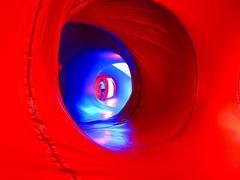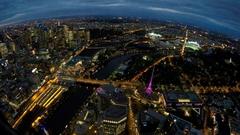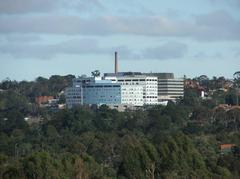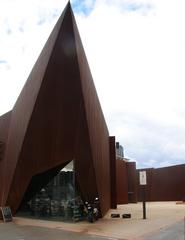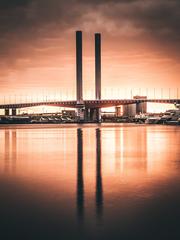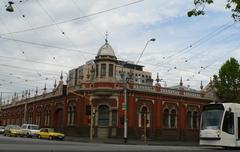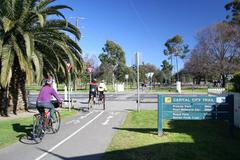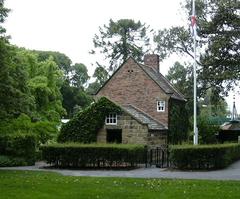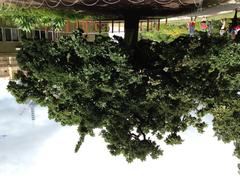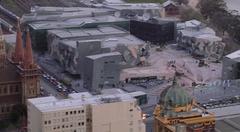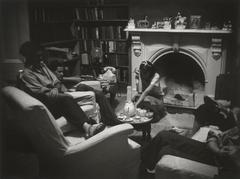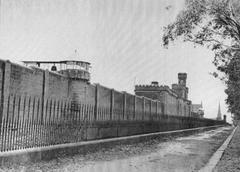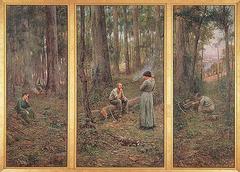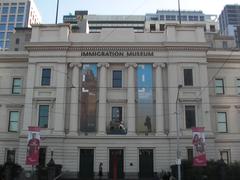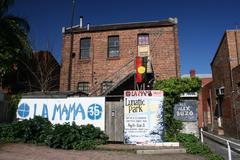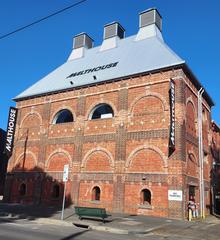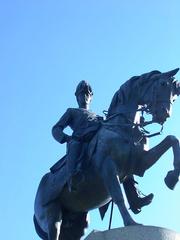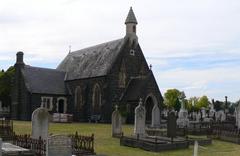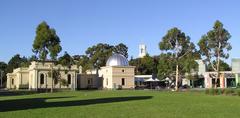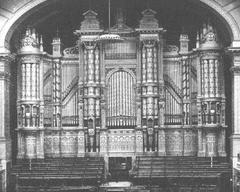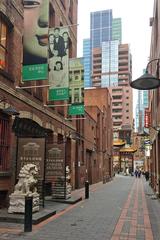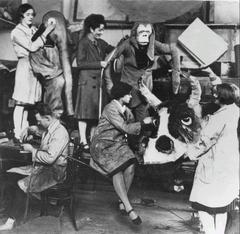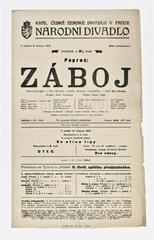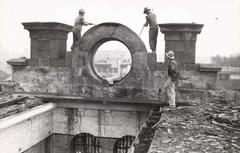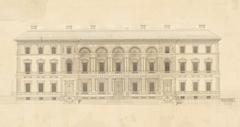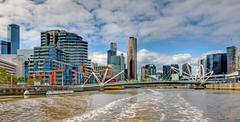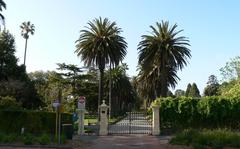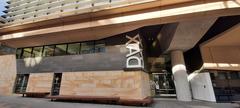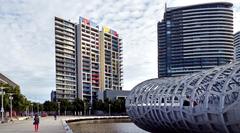Rippon Lea Estate Melbourne Visiting Guide: Hours, Tickets, and Tips
Date: 23/07/2024
Introduction
Rippon Lea Estate, a magnificent Victorian-era mansion and garden located in Melbourne’s Elsternwick suburb, offers a captivating journey into Australia’s rich historical and cultural heritage. Established in 1868 by Frederick Sargood, a prominent businessman and politician, the estate is a testament to the opulence and grandeur of the period. Designed by architect Joseph Reed, Rippon Lea is notable for its Lombardic Romanesque style, intricate brickwork, and arched windows, reflecting Sargood’s wealth and status (National Trust). The estate’s historical significance is further amplified by its innovative features, such as one of Australia’s earliest electric generators and an advanced irrigation system, which underscore Sargood’s forward-thinking vision (Heritage Council Victoria). Over the years, Rippon Lea has transitioned through various owners, each leaving their mark, until it was acquired by the National Trust of Australia (Victoria) in 1972, ensuring its preservation for future generations. Today, Rippon Lea stands not only as an architectural marvel but also as a vibrant cultural hub, hosting numerous events, guided tours, and educational programs, making it a must-visit for history enthusiasts, architecture aficionados, and nature lovers alike.
Table of Contents
- Introduction
- Origins and Early Development
- Expansion and Innovations
- Transition of Ownership
- Architectural Significance
- Garden Evolution
- Cultural and Social Impact
- Preservation and Restoration
- Visitor Information
- Frequently Asked Questions (FAQ)
- Conclusion
Origins and Early Development
Rippon Lea Estate, located in Elsternwick, Melbourne, was established in 1868 by Frederick Sargood, a prominent businessman and politician. Sargood, who made his fortune in the clothing and drapery business, purchased 27 acres of land to create a grand estate that reflected his wealth and status. The mansion, designed by architect Joseph Reed, was completed in 1868 and showcased the Lombardic Romanesque style, characterized by its intricate brickwork and arched windows (National Trust).
Expansion and Innovations
Frederick Sargood was a forward-thinking individual who incorporated several modern innovations into Rippon Lea. The estate was one of the first in Australia to have electricity, with Sargood installing a generator in the 1880s. He also implemented an advanced irrigation system, using water from an artificial lake on the property to maintain the extensive gardens. The estate’s gardens were designed by William Sangster, a renowned landscape gardener, and featured a mix of native and exotic plants, reflecting Sargood’s interest in horticulture (Heritage Council Victoria).
Transition of Ownership
After Frederick Sargood’s death in 1903, Rippon Lea was sold to a series of private owners. In 1910, the estate was purchased by Thomas Bent, a former Premier of Victoria, who made several modifications to the property. Bent added a ballroom and made changes to the garden layout, including the addition of a fernery and a conservatory. The estate continued to change hands until it was acquired by the National Trust of Australia (Victoria) in 1972, ensuring its preservation for future generations (National Trust).
Architectural Significance
Rippon Lea is a prime example of Victorian-era architecture and design. The mansion’s interior features elaborate plasterwork, stained glass windows, and ornate woodwork, all of which have been meticulously preserved. The estate’s outbuildings, including the stables, coach house, and gatehouse, also reflect the architectural styles of the period. The property’s significance extends beyond its architecture, as it provides a glimpse into the lifestyle of Melbourne’s elite during the late 19th and early 20th centuries (Victorian Heritage Database).
Garden Evolution
The gardens of Rippon Lea have undergone several transformations since their inception. Initially designed in the Victorian gardenesque style, the gardens featured formal lawns, flower beds, and a large lake. In the early 20th century, the gardens were redesigned to incorporate elements of the Arts and Crafts movement, with a focus on creating naturalistic landscapes. This included the addition of rockeries, water features, and informal planting schemes. Today, the gardens are a blend of these styles, offering visitors a diverse and picturesque landscape to explore (National Trust).
Cultural and Social Impact
Rippon Lea has played a significant role in Melbourne’s cultural and social history. The estate has hosted numerous events, including garden parties, weddings, and community gatherings. During World War II, the mansion was used as a military hospital, providing care for wounded soldiers. In the post-war period, the estate became a popular filming location, with its picturesque gardens and historic buildings serving as the backdrop for several movies and television shows, including the popular Australian series “Miss Fisher’s Murder Mysteries” (Screen Australia).
Preservation and Restoration
The National Trust of Australia (Victoria) has undertaken extensive preservation and restoration efforts to maintain Rippon Lea’s historical integrity. This includes the restoration of the mansion’s interior, the conservation of the gardens, and the repair of the estate’s outbuildings. These efforts ensure that Rippon Lea remains a valuable cultural and historical asset for future generations. The estate is also listed on the Victorian Heritage Register, highlighting its significance as a heritage site (Heritage Council Victoria).
Visitor Information
Visiting Hours and Tickets
Rippon Lea Estate is open to the public seven days a week. Visiting hours are typically from 10 AM to 5 PM, but it’s advisable to check the official National Trust website for the most current information. Tickets can be purchased online or at the entrance, with various pricing options available for adults, children, and concessions.
Guided Tours and Special Events
Guided tours are available and provide valuable insights into the history and significance of Rippon Lea. The estate also hosts special events throughout the year, including garden shows, musical performances, and themed tours. Check the official website for an up-to-date event calendar.
Photographic Spots
The estate offers numerous picturesque spots perfect for photography, including the mansion’s grand facade, the tranquil lake, and the beautifully landscaped gardens. Photography is allowed, but it’s recommended to review any restrictions on the official website.
Travel Tips and Nearby Attractions
Rippon Lea Estate is easily accessible by public transport, with Elsternwick Station located nearby. Parking is also available on-site. While in the area, consider visiting other nearby attractions such as the historic Elsternwick Park, the Jewish Museum of Australia, and the vibrant cafes and shops along Glen Huntly Road.
Frequently Asked Questions (FAQ)
Q: Are there any dining options available at Rippon Lea Estate? A: Yes, Rippon Lea features a café where visitors can enjoy light refreshments and meals. There is also a gift shop that offers a variety of souvenirs and locally made products.
Q: Is Rippon Lea Estate wheelchair accessible? A: The estate is committed to being accessible to all visitors. While some areas of the mansion and gardens may have limited accessibility, efforts are made to accommodate visitors with mobility needs. It’s recommended to contact the estate in advance for specific accessibility information.
Q: Can I host a private event at Rippon Lea? A: Yes, Rippon Lea Estate is available for private events such as weddings, corporate functions, and parties. For more information on booking and availability, visit the official website or contact the estate directly.
Conclusion
Rippon Lea Estate remains a cherished landmark in Melbourne, offering visitors a unique glimpse into the Victorian era’s opulent lifestyle and innovative spirit. From its establishment by Frederick Sargood to its preservation by the National Trust, the estate has continually evolved, blending historical authenticity with modern-day attractions. The meticulously maintained mansion and gardens, alongside the array of special events and educational programs, ensure that Rippon Lea is more than just a historical site; it is a living testament to Melbourne’s rich cultural heritage. Whether you’re exploring the intricate architecture, strolling through the diverse gardens, or participating in one of the many events, Rippon Lea promises an enriching and unforgettable experience. Plan your visit today to immerse yourself in the grandeur and history of Rippon Lea Estate (National Trust, Screen Australia).
References
- Discover the History and Visiting Tips for Rippon Lea Estate - Melbourne’s Heritage Treasure, National Trust https://www.nationaltrust.org.au/places/rippon-lea-house-and-gardens/
- Heritage Council Victoria https://heritagecouncil.vic.gov.au/
- Screen Australia https://www.screenaustralia.gov.au/
- Victorian Heritage Database https://vhd.heritagecouncil.vic.gov.au/
